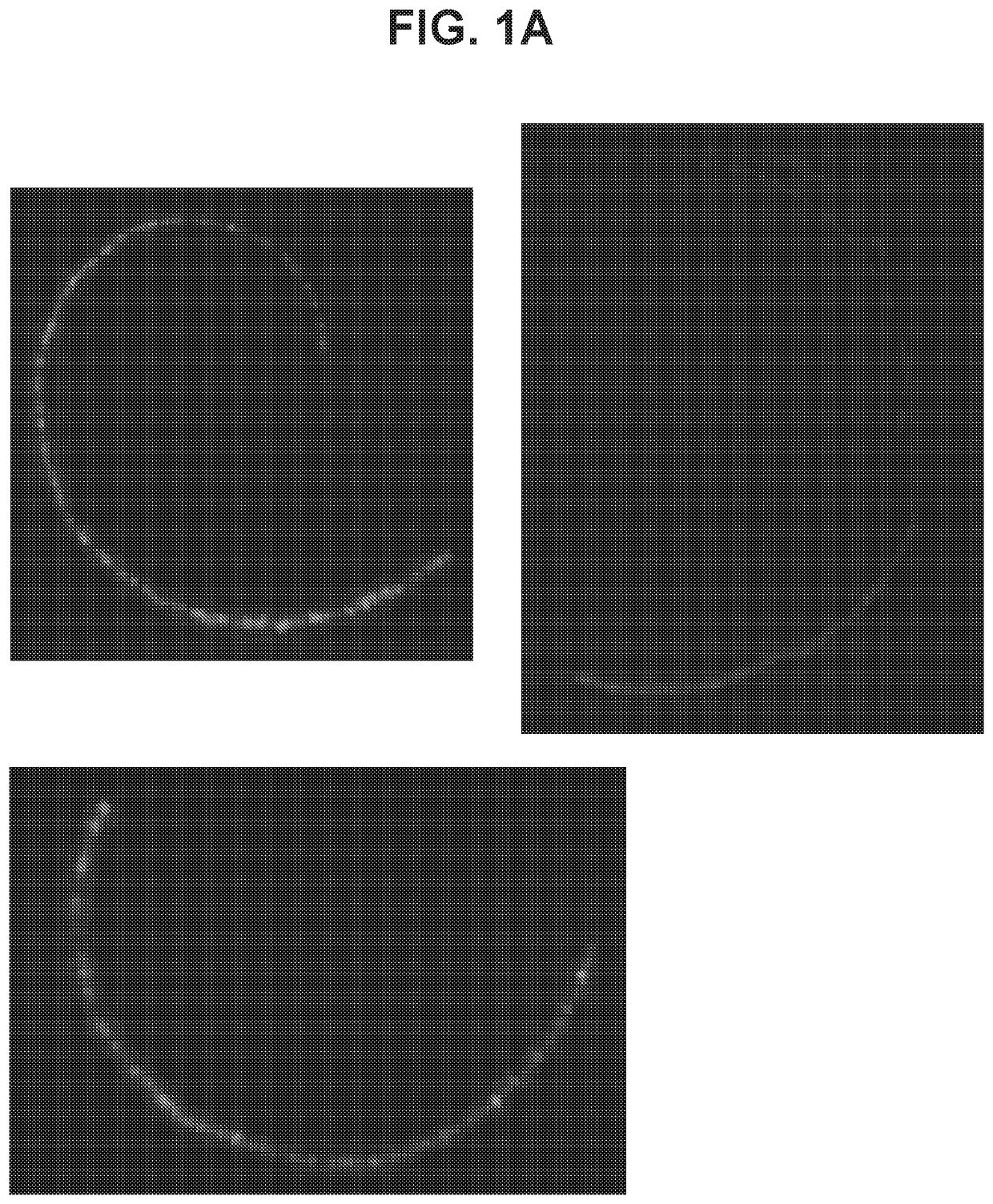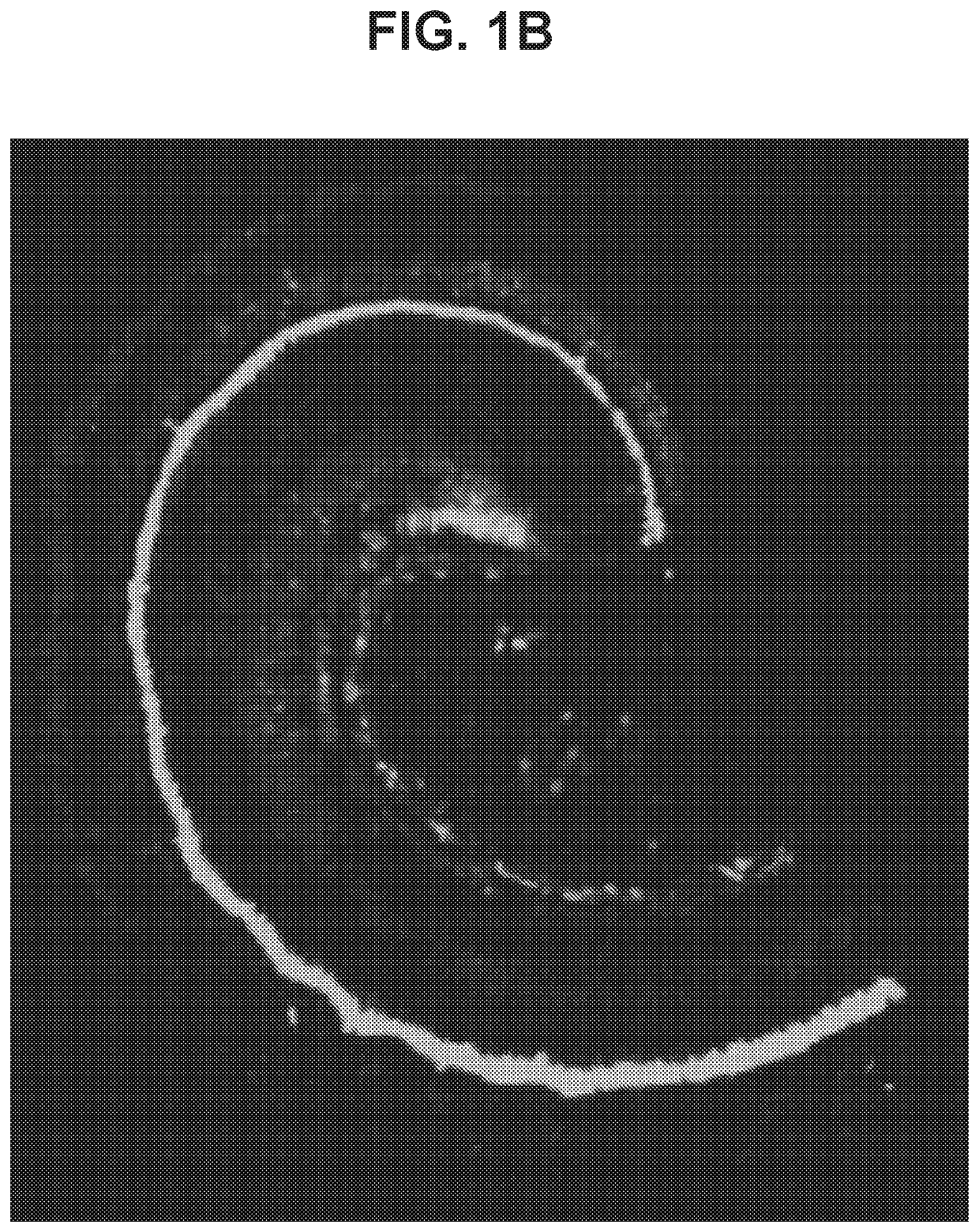Aav1 vectors and uses thereof for treatment of otic indications
a technology of otic indications and vectors, applied in the field of aav1 vectors, can solve the problems of minimal studies conducted in larger animal models that are more predictive of human treatment, loss of hearing, etc., and achieve the effects of strong expression, superior tropism, and promotion of the expression of a polynucleotid
- Summary
- Abstract
- Description
- Claims
- Application Information
AI Technical Summary
Benefits of technology
Problems solved by technology
Method used
Image
Examples
example 1
In Vivo Administration of a Composition Containing an AAV1 Viral Vector Carrying a Transgene to the Mouse Cochlea
[0501]To determine transduction efficacy of AAV1 viral vectors within the inner ear of mice, a composition containing an AAV1 vector carrying an EGFP transgene under control of the CMV promoter (AAV1-CMV-EGFP) was delivered unilaterally into the inner ear of 9-10 week old CBA / CaJ mice (n=6 mice) by way of injection to the posterior canal of the inner ear. Injections (1 μL) of viral titer at 2.94×1013 genome copies / mL were performed at an injection rate of 0.1 μL / min. Two weeks following injections, inner ears were surgically removed and a surface preparation of the basilar membrane was performed. To assess AAV-1 mediated transduction of the inner ear, EGFP expression was directly observed using fluorescence microscopy. EGFP expression was observed throughout the baso-apical axis of the cochlea, but varied across cell types along the length of the frequency map. (FIG. 1A; ...
example 2
In Vivo Administration of a Composition Containing an AAV7m8 Vector Carrying a Transgene to the Mouse Cochlea
[0502]To determine transduction efficacy of AAV7m8 viral vectors within the inner ear of mice, a composition containing an AAV7m8 vector carrying an EGFP transgene under control of a CAG promoter (AAV7m8-CAG-EGFP) was delivered unilaterally into the inner ear of 9-10 week-old CBA / CaJ mice (n=8 mice) by way of injection to the posterior canal of the inner ear. Injections (1 μL) of viral titer at 9.4×1012 genome copies / mL were performed at an injection rate of 0.1 μL / min. Two weeks following injections, inner ears were surgically removed and a surface preparation of the basilar membrane was performed. EGFP expression was observed throughout the entire cochlea (FIG. 2A). A higher-power image shows EGFP expression in multiple cell types including IHCs, OHCs, and cells of the spiral ganglion and spiral limbus throughout the basal-to-apical extent of the cochlea (FIG. 2B; left pane...
example 3
In Vivo Administration of a Composition Containing an AAV2 Vector Carrying a Transgene to the Inner Ear of Adult Non-Human Primates
[0503]To determine transduction efficacy of AAV2 viral vectors within the inner ear of adult non-human primates, a composition containing an AAV2 vector carrying a GFP transgene under control of a CMV promoter was delivered unilaterally (n=1 animals) and bilaterally (n=2 animals) into the inner ear of rhesus monkeys by way of injection through the round window membrane. Injections (30 μL) of viral titer at 3.39×1012 genome copies / mL were performed at an injection rate of 15 μL / min. Four weeks post-injection, inner ears were surgically removed and surface preparation of basilar membranes was performed. Immunolabeling for Myo7A was used to identify hair cells of the inner ear (FIG. 3A, panels in the right column) and AAV2-mediated transduction of inner ear cells was measured by direct GFP fluorescence (FIG. 3A, panels in the left column). GFP expression wa...
PUM
| Property | Measurement | Unit |
|---|---|---|
| Fraction | aaaaa | aaaaa |
| Fraction | aaaaa | aaaaa |
| Fraction | aaaaa | aaaaa |
Abstract
Description
Claims
Application Information
 Login to View More
Login to View More - R&D
- Intellectual Property
- Life Sciences
- Materials
- Tech Scout
- Unparalleled Data Quality
- Higher Quality Content
- 60% Fewer Hallucinations
Browse by: Latest US Patents, China's latest patents, Technical Efficacy Thesaurus, Application Domain, Technology Topic, Popular Technical Reports.
© 2025 PatSnap. All rights reserved.Legal|Privacy policy|Modern Slavery Act Transparency Statement|Sitemap|About US| Contact US: help@patsnap.com



